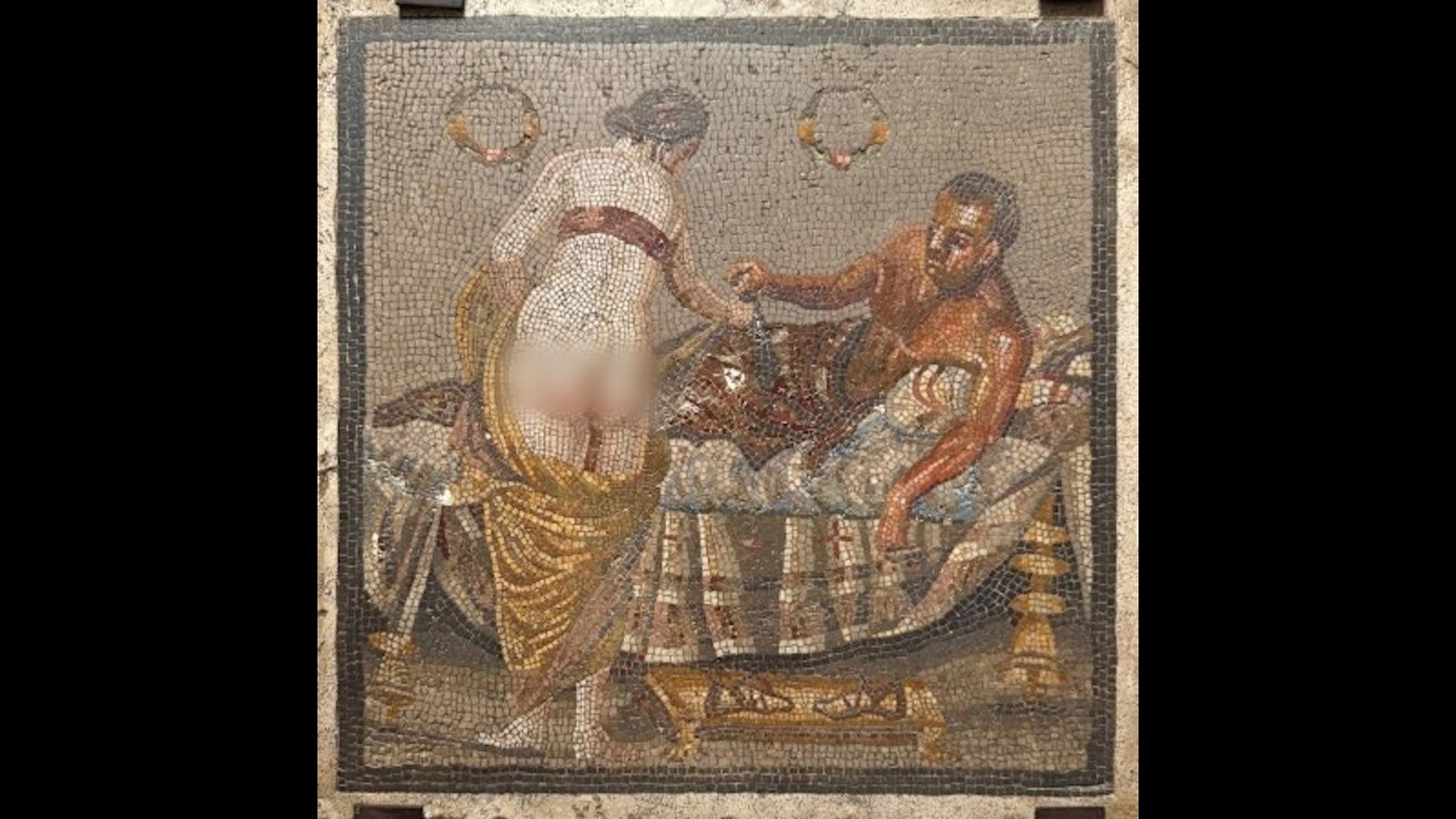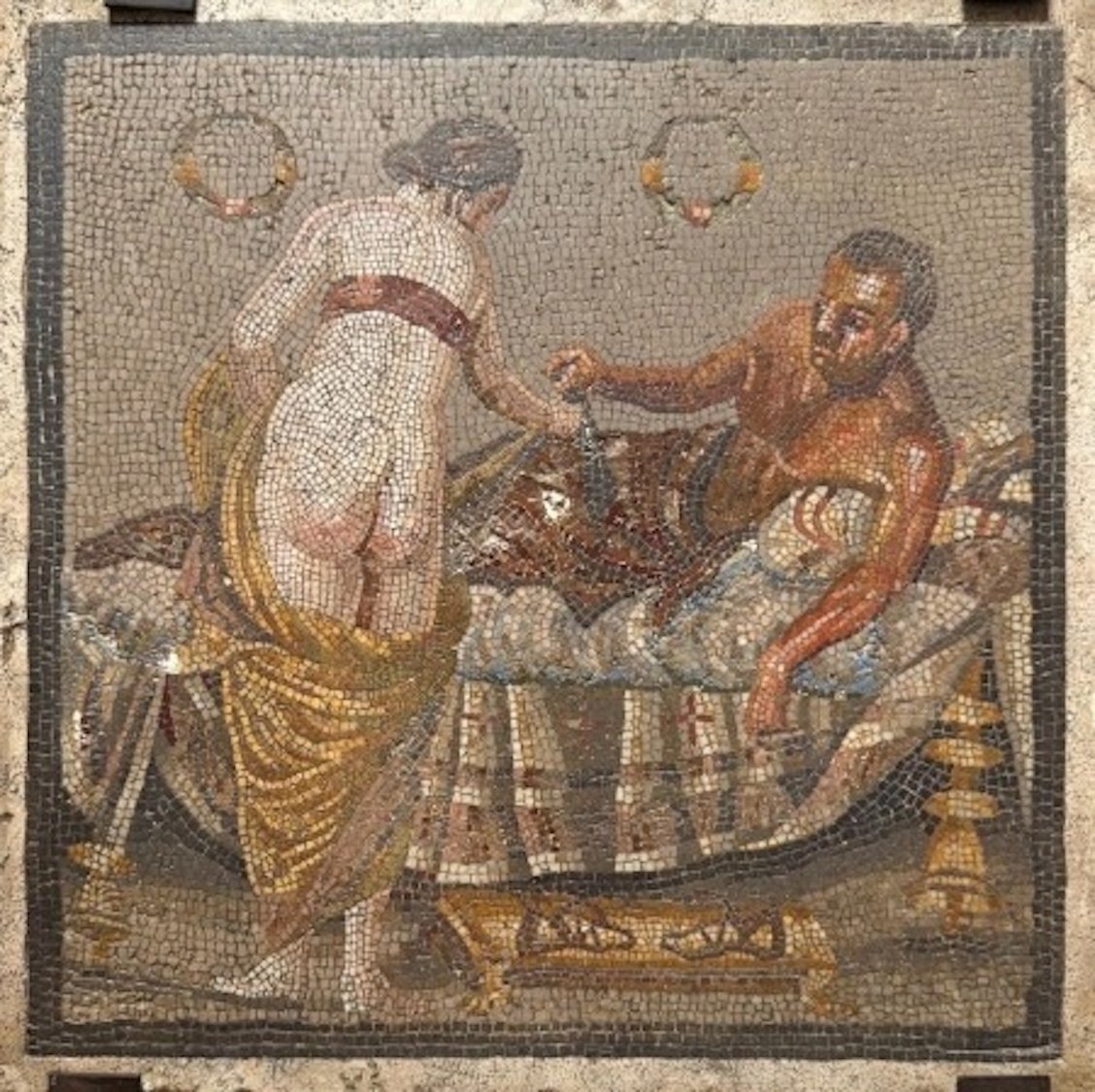
Get the Popular Science daily newsletter💡
Breakthroughs, discoveries, and DIY tips sent every weekday.
A steamy piece of stolen history has finally returned to Italy, decades after its initial disappearance. According to the Archaeological Park of Pompeii, national authorities and military officials spent the past two years working towards repatriating an erotic travertine tile mosaic with ancient Roman origins. Although the exact timeline remains murky, its initial theft is traceable to a Nazi captain assigned to Italy’s military supply chain during World War II.
The roughly two-square-foot mosaic is estimated to originate between 100 BCE and100 CE, and depicts two half-dressed lovers—a shirtless man reclining on a couch or bed, and a barebottomed woman facing away from the viewer. Such decorative scenes were often installed into the bedroom floor of Roman homes and villas.
“It is the moment when the theme of domestic love becomes an artistic subject,” park director Gabriel Zuchtriegel explained in a co-written accompanying essay, first reported by the Associated Press. “While the Hellenistic period, from the fourth to the first century BCE, exulted the passion of mythological and heroic figures, now we see a new theme.”

Some of the mosaic’s details—such as identities of its previous owner and the Wehrmacht captain—were not made available during its unveiling event on July 15. Officials know the thief gifted the artifact to the recipient at some point during the war. Following the owner’s death,their heirs contacted the Carabinieri unit in Rome tasked with protecting cultural heritage to see about returning the artifact. Authorities confirmed its authenticity in September 2023, then began orchestrating its repatriation to Italy.
After further collaborations with researchers at the Archaeological Park of Pompeii, experts now believe the artwork potentially came from a region near Mount Vesuvius. The devastation following the volcano’s famous eruption in 79 CE is well-documented across multiple archeological sites at Pompeii, Herculaneum, and elsewhere. In recent years, discoveries have included vitrified human brain matter, victims’ DNA, as well as texts hidden inside charred scrolls.
Zuchtriegel cautioned that it’s unlikely experts will ever be able to identify the mosaic’s exact provenance. That said, archaeologists intend to conduct additional examinations and archaeometric analyses in the hopes of learning more about the piece.
“Every looted artifact that returns is a wound that heals,” Zuchtriegel said in a statement. “The wound lies not so much in the material value of the work, but in its historical value; a value that is severely compromised by the illicit trafficking of antiquities.”

More deals, reviews, and buying guides
The PopSci team has tested hundreds of products and spent thousands of hours trying to find the best gear and gadgets you can buy.


